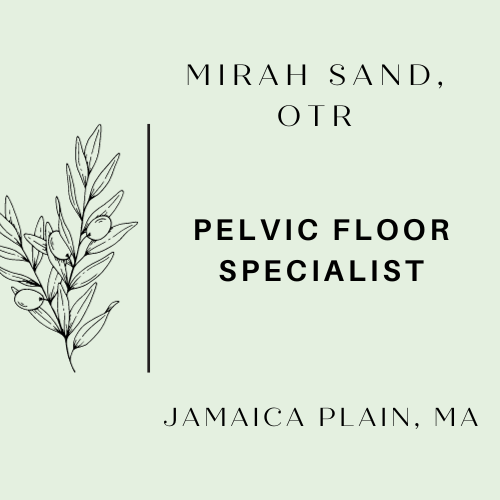Lichens and the pelvic floor
Lichen sclerosus is an inflammatory condition that impacts the skin of the genital region. Current research suggests that it is an autoimmune disease that can progress overtime, making the skin of the labia, clitoris, tip of the penis, foreskin, and occasionally the perineum dry, irritated, and sometimes painful and itchy. It’s common for the skin in these areas to become white and patchy over time. Skin can also become thinner, leading to increased risk for tearing and microtraumas. Additionally, scar tissue and adhesions can form over time, putting people with lichens at risk for challenges with bladder and bowel dysfunction. Symptoms are often worse around menstruation due to hormonal changes.The condition is extremely rare, and may impact between 1 in 300 to 1 in 1000 people. Lichen sclerosus is treated medically with topical steroids and other ointments to help reduce skin inflammation. There is no cure for lichens, but symptoms can be reduced or sometimes eliminated with treatment.
Treating yeast infections
Many people with lichens first believe that it’s a yeast infection. If you’re having what you believe to be recurring yeast infections, It’s important to get tested for actual yeast. Although it’s more convenient when you can treat something at home without going to the doctor, there are many genital disorders that are often confused for yeast infections, and when this happens, there can be a delay in diagnosis and treatment of the root cause. With lichens, many report initial symptoms feeling similar to that of a yeast infection, but located along the labia rather than internally.
Medical Treatment
Sitz baths, alongside usage of topical steroid creams, can be very beneficial. Vaginal moisturizers can also reduce symptoms. Because hormonal changes can exacerbate symptoms, hormonal management may also be helpful.
How can a pelvic floor therapist help with lichens
Although pelvic floor physical therapy or occupational therapy cannot cure lichens sclerosus, it can help with symptom management.
Pain Cycle
With any chronic condition to the area of the genitals, abdomen, or pelvic floor, a person can be at risk for developing a pain cycle that makes it harder to have a pain-free experience. Oftentimes, our pelvic floor muscles can become tense or guarded in response to sensations of inflammation or irritation. This can increase tone in the pelvic floor (known as hypertonicity), making it harder for blood and lymph flow to occur. This increases the likelihood that a person might experience pelvic pain. A pelvic floor physical therapist or occupational therapist can teach you tools for working with pelvic pain related to lichens, including stretches, breathing techniques, pain management tools, and manual self-release.
Scar massage
Scarring caused by lichens sclerosus can be uncomfortable, and can lead to clitoral adhesions and impaired bowel and bladder habits. A pelvic floor therapist trained in internal and external manual techniques can support with increasing the blood and lymph flow to any adhesions formed, thus increasing the likelihood of decreased pain, ease with urination and defecation, and more pleasure.
Lichens and pain with sex
Unfortunately, pain with sex with lichens sclerosus is extremely common. This can manifest as discomfort with touch to the clitoral region and labia, as well as pain or burning with penetrative sex. A trained pelvic floor physical or occupational therapist can help educate you about breathing techniques, mobility training, and manual work to help support these tissues. Additionally, many people with lichens can benefit from dilator training to help support decreased pain with penetration.
Lichens and pregnancy
There is unfortunately little literature on the connection between lichens sclerosus and pregnancy/labor. Working with a qualified pelvic floor therapist can help consciously lengthen the muscles of the pelvic floor, which will not only help you with labor, but could also help with managing symptoms associated with lichens as well. Getting cleared by your OBGYN for perineal massage at about 34 weeks pregnant may also be helpful in reducing tearing during labor. There is some research to suggest that for folks with lichens sclerosus, symptoms remain unchanged or decrease during pregnancy, but that some may experience an increase in symptoms postpartum. 1
What’s the difference between lichens sclerosus and lichens planus?
Lichens sclerosus and lichens planus are very similar conditions. The main difference between them is that lichens planus can involve the mucosal membranes or skin of the mouth as well as other regions of the body, including the genitals. Lichens sclerosus usually only impacts the skin of the genitals. If you’ve been diagnosed with lichens planus, and it’s impacting the skin of the vulva and vagina, you will still benefit from skilled pelvic floor physical or occupational therapy.
Lichens sclerosus and planus are challenging conditions, but with the help of a team of providers, including pelvic floor physical therapy or occupational therapy, you can get the support you need to decrease pain and discomfort.
1
https://obgyn.onlinelibrary.wiley.com/doi/10.1111/1471-0528.17601?af=R
